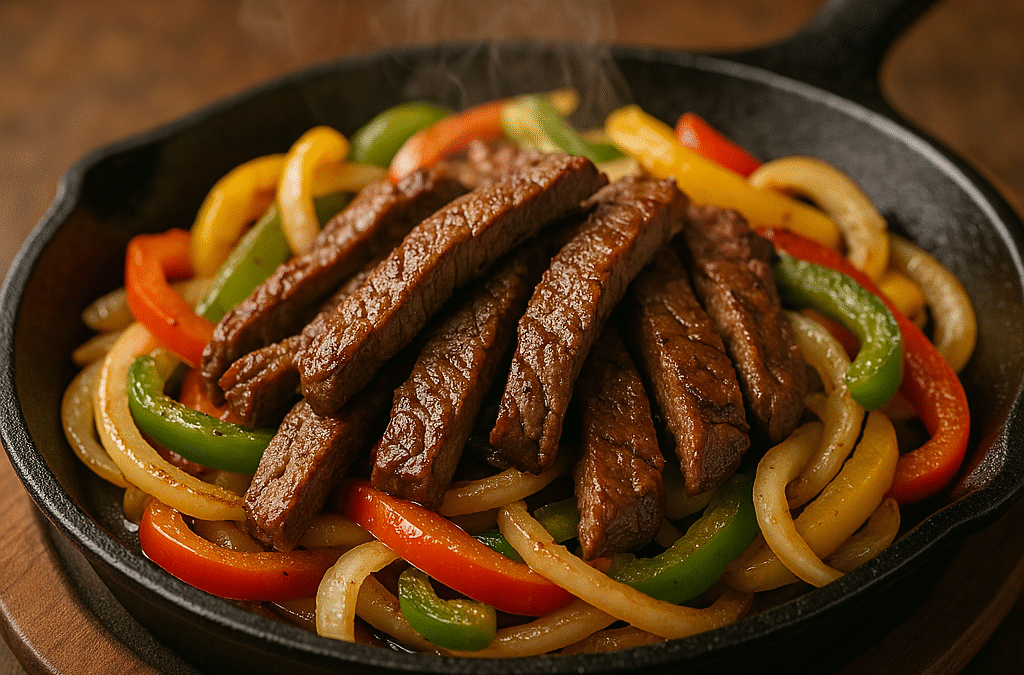
by Ross Kingsley | Apr 6, 2025 | KNOWLEDGE: MEAT ESSENTIALS
Whether sizzling on a hot skillet in a bustling Tex-Mex restaurant, or served with a creative twist in kitchens around the world, Fajitas have become a beloved staple of global cuisine. But behind their popularity lies a rich history that stretches back nearly a century, rooted in the ranchlands of Texas and northern Mexico.
The story of Fajitas begins in the 1930s, when Mexican ranch workers—vaqueros—laboring on cattle ranches in South and West Texas were often paid in part with the less desirable cuts of beef. One of those cuts was skirt steak, a flavorful but tough piece of meat taken from the diaphragm muscle of the cow. Rather than waste it, these workers found a way to make it not only edible but delicious. They marinated the steak to tenderize it, grilled it over open flames, sliced it into thin strips, and served it with handmade tortillas. This simple, practical preparation laid the groundwork for what would later be recognized and celebrated as Fajitas.
The name itself—“fajita”—is a nod to its origins. It comes from the Spanish word faja, meaning “strip” or “belt,” referencing both the shape of the meat and the part of the cow it comes from. Originally, Fajitas were all about skirt steak, which remains a popular choice thanks to its deep beefy flavor. But over time, the dish evolved to include a wide range of proteins. Today, you’ll find Fajitas made with chicken, shrimp, pork, or even tofu, each variation offering a unique take on the dish while maintaining the core components: grilled meat or veggies, tortillas, and toppings.
Fajitas remained a mostly regional specialty until the 1970s, when Tex-Mex cuisine began to take off in the United States. Restaurants in cities like Houston and San Antonio started to embrace the sizzling spectacle of Fajitas, serving them on hot cast-iron skillets that sizzled dramatically as they hit the table. This presentation wasn’t just for show—it also helped keep the meat hot and juicy, adding to the sensory experience. With sautéed onions, colorful bell peppers, and a variety of toppings like guacamole, shredded cheese, sour cream, and pico de gallo, Fajitas quickly became a menu highlight. Their appeal was clear: customizable, flavorful, and perfect for sharing.
As Tex-Mex cuisine grew in popularity, so did the fajita’s global reach. In the UK, grocery store aisles are lined with pre-packaged fajita kits that allow home cooks to recreate the dish with minimal effort. In India, you might find naan substituted for tortillas and the spices adjusted to suit local palates. Korea has embraced fajita fusion too, with bulgogi-style beef often making its way into tortillas, blending sweet soy-marinated meat with fajita-style vegetables.
Yet, despite all these creative adaptations, the heart of the fajita remains unchanged. It’s still about bringing together simple ingredients—meat, vegetables, tortillas—and allowing the diner to make the dish their own. That sense of interactivity and customization is a big part of what makes Fajitas so enduring.
In many ways, the journey of Fajitas mirrors the broader story of food itself: a practical solution born out of necessity that evolves into a celebrated, multicultural dish. From humble beginnings on Texas ranches to stylish tables in cities across the world, Fajitas show how tradition, flavor, and adaptability can come together in one unforgettable meal.
Image Credit: https://www.churrascophuket.com
_ _ _
© CHURRASCO PHUKET STEAKHOUSE / ALL RIGHTS RESERVED
Reprinting, reposting & sharing allowed, in exchange for a backlink and credits
Churrasco Phuket Steakhouse serves affordable Wagyu and Black Angus steaks and burgers. We are open daily from 12noon to 11pm at Jungceylon Shopping Center in Patong / Phuket.
We are family-friendly and offer free parking and Wi-Fi for guests. See our menus, reserve your table, find our location, and check all guest reviews here:
https://ChurrascoPhuket.com/
#Churrascophuket #jungceylon #phuketsteakhouse #affordablewagyu #wagyu
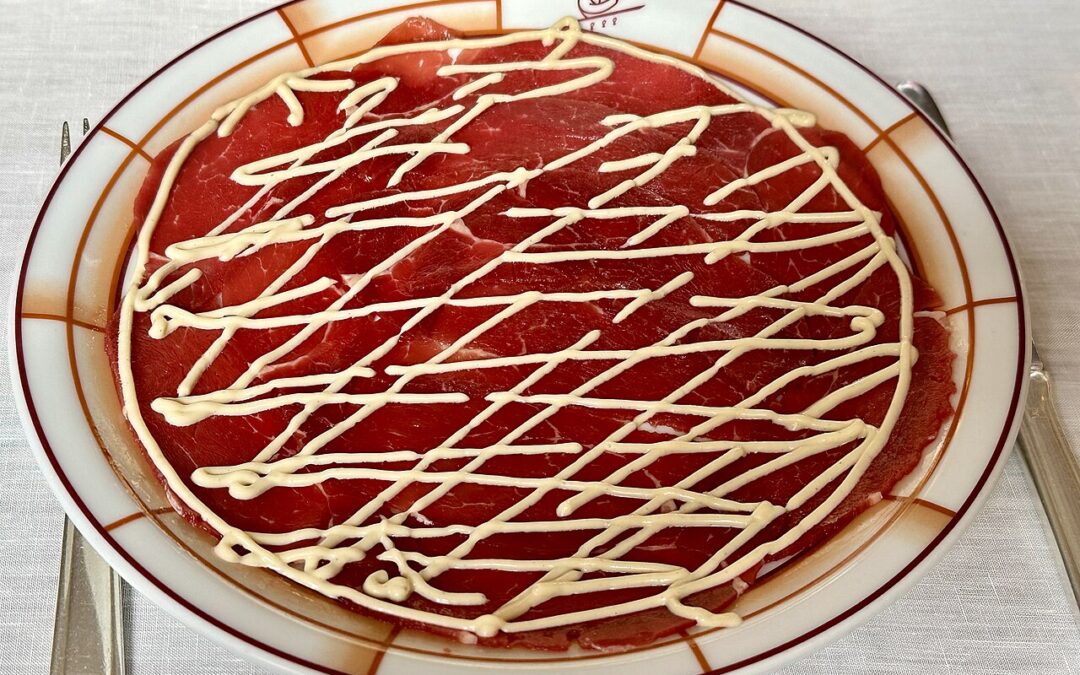
by Ross Kingsley | Mar 30, 2025 | KNOWLEDGE: MEAT ESSENTIALS
Beef Carpaccio, or Carpaccio di Manzo, is a classic Italian appetizer known for its simplicity and elegance. Made with thinly sliced raw beef, it’s traditionally served with olive oil, lemon juice, capers, and shaved Parmesan. The key to a perfect carpaccio lies in the quality of the beef, as the dish showcases the meat in its absolute purest form.
Choosing the Right Cut
While tenderloin is the most common choice due to its buttery texture, other cuts can also work beautifully. Sirloin brings a slightly richer flavor while remaining tender. Eye of round, a lean and affordable option, requires careful slicing to achieve the right texture. Ribeye, with its fine marbling, offers a more robust taste, though it results in a slightly fattier Carpaccio. For a truly indulgent version, wagyu beef enhances the dish with its exceptional marbling and melt-in-your-mouth quality. Regardless of the cut, using the freshest, highest-quality beef—ideally grass-fed—is essential for both flavor and safety.
A Dish with History
Carpaccio originated in 1950 at Harry’s Bar in Venice, created by Giuseppe Cipriani for a countess who couldn’t eat cooked meat. Inspired by the vivid reds and whites in the paintings of Venetian artist Vittore Carpaccio, Cipriani named the dish in his honor. Its striking presentation and delicate flavors quickly made it a culinary classic.
Global Interpretations
Though deeply rooted in Italian tradition, Carpaccio has inspired variations across the world. In Japan, the use of highly marbled wagyu elevates the dish with an ultra-rich texture, while Argentina, known for its exceptional grass-fed beef, brings a deeper, earthier flavor to its version. Beyond Carpaccio, many cultures have long traditions of raw beef preparations. In Ethiopia, Kitfo combines minced beef with spiced butter and chili seasoning, while Korea’s Yukhoe balances umami and sweetness with thinly sliced beef dressed in soy sauce, sesame oil, and pear.
A Timeless Classic
Carpaccio di Manzo is a testament to Italian culinary artistry—simple, refined, and focused on high-quality ingredients. Whether made with tenderloin, sirloin, or wagyu, it remains a beloved dish, connecting food lovers to a broader tradition of raw beef delicacies enjoyed around the world.
Image Credit: https://www.wikipedia.org
_ _ _
© CHURRASCO PHUKET STEAKHOUSE / ALL RIGHTS RESERVED
Reprinting, reposting & sharing allowed, in exchange for a backlink and credits
Churrasco Phuket Steakhouse serves affordable Wagyu and Black Angus steaks and burgers. We are open daily from 12noon to 11pm at Jungceylon Shopping Center in Patong / Phuket.
We are family-friendly and offer free parking and Wi-Fi for guests. See our menus, reserve your table, find our location, and check all guest reviews here:
https://ChurrascoPhuket.com/
#Churrascophuket #jungceylon #phuketsteakhouse #affordablewagyu #wagyu
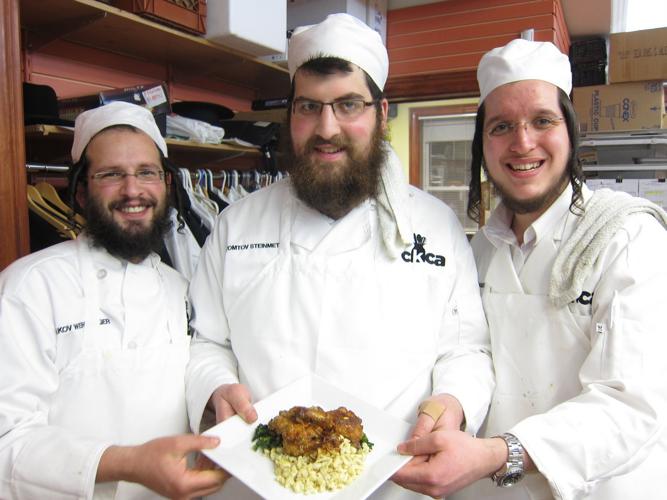
by Ross Kingsley | Mar 23, 2025 | KNOWLEDGE: MEAT ESSENTIALS
Origins and Historical Significance
Kosher beef is a fundamental part of Jewish dietary laws, known as kashrut, which date back thousands of years. The concept of kosher food is rooted in the Torah, specifically in the books of Leviticus and Deuteronomy. These ancient texts outline which animals can be consumed, how they must be slaughtered, and the handling process that follows.
In Jewish tradition, dietary laws serve both spiritual and practical purposes. While religious reasons are primary, some scholars suggest that these regulations also promoted hygiene and food safety in ancient times. Over the centuries, kosher practices have remained largely unchanged, reflecting deep cultural and religious significance.
Regulations and Restrictions
For beef to be considered kosher, it must meet specific requirements at every stage, from selection to preparation:
-
Permitted Animals: Only ruminant animals with split hooves, such as cattle, sheep, and goats, are kosher. Pigs, for example, are not allowed because they do not chew cud.
-
Ritual Slaughter (Shechita): The animal must be slaughtered by a trained Jewish butcher (shochet) using a sharp, smooth knife to ensure a quick and humane process. The method is intended to minimize pain and ensure a clean cut.
-
Blood Removal: Blood is considered unkosher, so it must be fully drained or removed by salting and soaking the meat.
-
Forbidden Parts: Certain parts of the animal, such as the sciatic nerve and specific fats, are not kosher and must be carefully removed.
After slaughter, the meat undergoes inspection to ensure the animal was healthy and free of disease. If any major defects are found, the meat is deemed non-kosher.
Kosher vs. Halal: Key Differences
While both kosher and halal dietary laws originate from religious texts and involve strict slaughter regulations, they have notable differences:
-
Religious Context: Kosher follows Jewish dietary laws from the Torah, while halal follows Islamic dietary laws from the Quran.
-
Slaughter Process: In both traditions, the animal must be slaughtered with a single cut to the throat, but in halal, a prayer to Allah is required before slaughter. Kosher does not require a verbal blessing for each animal but emphasizes the shochet’s religious training.
-
Blood Removal: Kosher meat undergoes additional soaking and salting to remove all traces of blood, whereas halal meat does not require this extra step.
-
Permitted Cuts: Some cuts of beef, particularly from the hindquarters, are not considered kosher due to the prohibition of the sciatic nerve, while halal has no such restriction.
Modern-Day Kosher Beef
Today, kosher beef is available in many countries, catering to both Jewish communities and consumers who seek specific preparation methods. Certification agencies oversee kosher meat production to ensure compliance with religious guidelines. While maintaining ancient traditions, kosher beef continues to be a significant part of Jewish dietary culture.
Can Jews Eat Halal, and Can Muslims Eat Kosher?
Jewish dietary laws require strict adherence to kosher guidelines, meaning observant Jews cannot eat halal meat unless it also meets kosher standards. Since halal slaughter does not include the kosher requirement of removing certain forbidden fats and the sciatic nerve, as well as the salting process to remove blood, halal meat is generally not considered kosher.
For Muslims, the situation is more flexible. Some Islamic scholars permit the consumption of kosher meat because it meets many of the same principles as halal, including slaughter by a monotheistic believer and humane killing practices. However, some Muslims avoid kosher meat because Jewish butchers do not recite the name of Allah during slaughter. The acceptance of kosher meat as halal depends on individual interpretation and sectarian beliefs within Islam.
Conclusion
In a world where food production is increasingly industrialized, kosher beef remains a testament to the importance of cultural identity and ethical consumption. While modern dietary trends emphasize sustainability and transparency, kosher practices have long upheld strict standards regarding humane treatment, cleanliness, and food purity. Though fewer people follow religious dietary laws strictly, kosher beef continues to connect Jewish communities to their heritage. In an era of evolving food choices, preserving these traditions remains a meaningful way to honor cultural roots and shared identity.
Image Credit: https://www.jewishaz.com/
_ _ _
© CHURRASCO PHUKET STEAKHOUSE / ALL RIGHTS RESERVED
Reprinting, reposting & sharing allowed, in exchange for a backlink and credits
Churrasco Phuket Steakhouse serves affordable Wagyu and Black Angus steaks and burgers. We are open daily from 12noon to 11pm at Jungceylon Shopping Center in Patong / Phuket.
We are family-friendly and offer free parking and Wi-Fi for guests. See our menus, reserve your table, find our location, and check all guest reviews here:
https://ChurrascoPhuket.com/
#Churrascophuket #jungceylon #phuketsteakhouse #affordablewagyu #wagyu
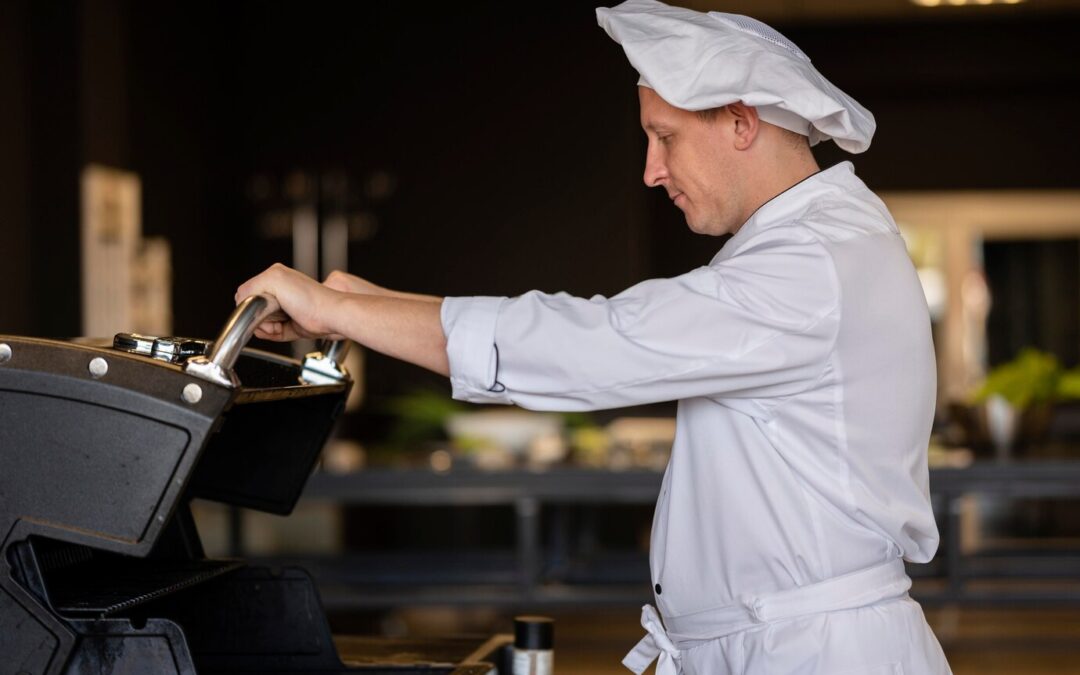
by Ross Kingsley | Mar 16, 2025 | KNOWLEDGE: MEAT ESSENTIALS
Smoking beef is a tradition that spans the globe, with deep roots in ancient preservation methods. Long before refrigeration, people discovered that smoking meat not only prolonged its shelf life but also enhanced its flavor. Over centuries, different cultures refined smoking techniques, developing distinctive dishes that showcase the rich and complex taste of smoked beef.
North America: The Reign of Barbecue
In the United States, smoked beef is at the heart of barbecue culture. Texas-style brisket, one of the most famous smoked beef dishes, is slow-cooked for hours over oak or mesquite wood, resulting in a tender, flavorful cut with a characteristic bark. Other regional styles, such as Kansas City’s sweet and smoky approach or Carolina’s vinegar-based variations, highlight the diversity of smoked beef preparations across the country.
South America: A Rustic Tradition
While grilling dominates much of South America’s beef culture, smoked beef still holds a place in traditional cooking. In Paraguay, so’o ahumado (smoked beef) is prepared using native woods, imparting a unique smoky depth. Argentina and Uruguay, famous for their beef culture, also incorporate smoking in certain regional preparations, such as charqui, a type of smoked and dried beef similar to jerky. In Brazil’s southern regions, some gaucho traditions include smoking meats alongside open-fire cooking.
Europe: Cured and Smoked Classics
Europe has long embraced smoked beef, particularly in cured forms. Pastrami, originally from Eastern Europe, combines curing, seasoning, and smoking to create its distinctive taste, later becoming an iconic delicacy in New York’s Jewish delis. In Germany, smoked beef appears in sausages like Landjäger, while in Switzerland, Bündnerfleisch is a smoked, air-dried beef with a rich, concentrated flavor.
Asia: Unique Smoking Techniques
In Mongolia, smoked beef jerky has been a staple for nomadic communities, providing a high-protein, long-lasting food source. Indonesia’s dendeng, a spiced and smoked beef dish, showcases the country’s bold flavors. In China, la rou refers to smoked and cured meats, including beef, often prepared during winter months.
Australia & Africa: Indigenous and Traditional Methods
Australian Indigenous communities have long used smoking techniques to prepare meats, including beef, over native hardwoods, imparting deep flavors. In South Africa, biltong, though primarily air-dried, sometimes incorporates smoking for added complexity, making it a prized snack.
From ancient preservation methods to modern culinary staples, smoked beef remains a globally cherished tradition, offering a depth of flavor that transcends borders.
Image Credit: https://freepik.com
_ _ _
© CHURRASCO PHUKET STEAKHOUSE / ALL RIGHTS RESERVED
>>> Reprinting, reposting & sharing allowed, in exchange for a backlink and credits <<<
Churrasco Phuket Steakhouse serves affordable Wagyu and Black Angus steaks and burgers. We are open daily from 12noon to 11pm at Jungceylon Shopping Center in Patong / Phuket.
We are family-friendly and offer free parking and Wi-Fi for guests. See our menus, reserve your table, find our location, and check all reviews here:
https://ChurrascoPhuket.com/
#Churrascophuket #jungceylon #phuketsteakhouse #affordablewagyu #wagyu
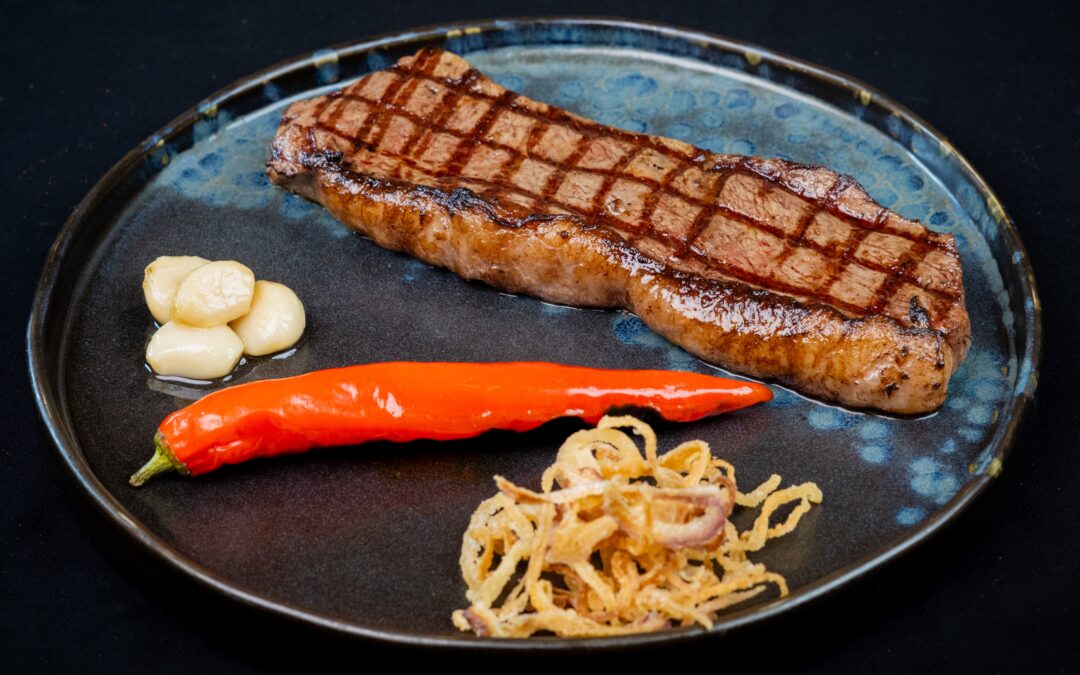
by Ross Kingsley | Mar 9, 2025 | KNOWLEDGE: MEAT ESSENTIALS
When it comes to ordering steak, one common dilemma is whether to opt for cuts that are “on the bone” or those that are served boneless. While both have their merits, the choice often boils down to presentation and value for money.
The Flavor Factor
The primary reasons people choose bone-in steaks is their belief that the bone enhances flavor. During the cooking process, the bone marrow can release subtle umami-rich juices that infuse the meat, adding depth to its taste. Cuts like T-bone or ribeye on the bone are often touted for their flavor profiles. However, this effect is not as dramatic as some might think. Most of the flavor enhancement occurs near the bone, leaving much of the meat unaffected.
Cooking Experience
If cooked professionally, bone-in steaks can retain heat better due to the thermal properties of the bone. This can help the steak cook more evenly and help retain its juiciness. However, this also makes cooking trickier for the uninitiated, as the meat closest to the bone can take longer to reach the desired doneness.
The Cost Conundrum
While bone-in steaks might look impressive on the plate, they often come with a hidden cost: you’re paying premium steak prices for the weight of the bone. A portion of your hard-earned money goes toward something that, for most people, is inedible and often relegated to being a treat for the family dog. By opting for boneless cuts, you’re ensuring that every gram you pay for is edible meat, making it the more economical choice.
The Verdict
Bone-in steaks are ideal if you value the aesthetic and vague potential flavor boost. However, if you prefer practicality, boneless cuts offer better value without compromising on quality. At Churrasco Phuket Steakhouse, we have made a conscious decision not to offer any bone-in steaks. This ensures we provide full value for money, focusing solely on superb cuts of steak that deliver an exceptional dining experience. The choice ultimately depends on what matters most to you: flavor, presentation, or cost.
Image Credit: https://churrascophuket.com/menus/ (Sirloin, Page 17)
_ _ _
© CHURRASCO PHUKET STEAKHOUSE / ALL RIGHTS RESERVED
>>> Reprinting, reposting & sharing allowed, in exchange for a backlink and credits <<<
Churrasco Phuket Steakhouse serves affordable Wagyu and Black Angus steaks and burgers. We are open daily from 12noon to 11pm at Jungceylon Shopping Center in Patong / Phuket.
We are family-friendly and offer free parking and Wi-Fi for guests. See our menus, reserve your table, find our location, and check all reviews here:
https://ChurrascoPhuket.com/
#Churrascophuket #jungceylon #phuketsteakhouse #affordablewagyu #wagyu
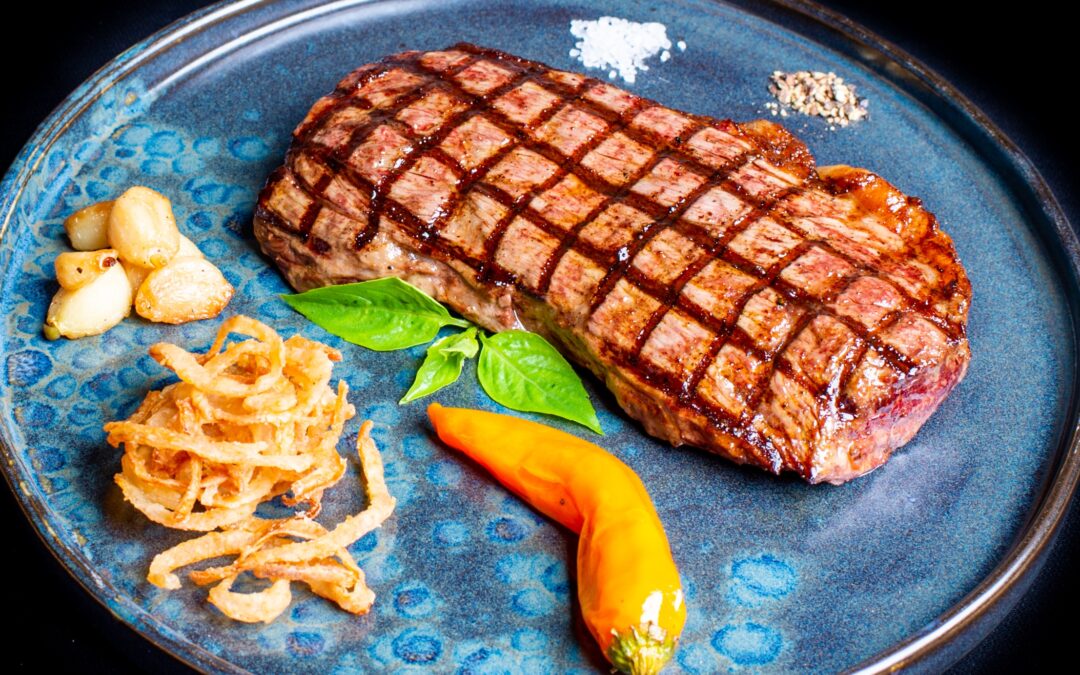
by Ross Kingsley | Mar 2, 2025 | KNOWLEDGE: MEAT ESSENTIALS
Latin America is celebrated for its rich grilling traditions and unique steak cuts. These cuts reflect regional practices and cultural heritage, offering distinct flavors and textures compared to Western styles. Among the most iconic are the Picanha, Maminha, Arrachera, and others that have gained global popularity.
The Picanha, a Brazilian favorite, comes from the top sirloin cap and is instantly recognizable by its thick fat cap, which locks in flavor and tenderness during cooking. Unlike Western butchery, which often trims this section, Brazilians cook it whole, skewered and seasoned simply with rock salt for churrasco grilling. This method highlights the meat’s natural flavor, and the Picanha has since become a global sensation, introduced through Brazilian steakhouses worldwide.
The Maminha, or tri-tip, is another standout Brazilian cut from the bottom sirloin. Known for its lean texture, light marbling, and buttery flavor, the Maminha is often slow-roasted or grilled whole, making it a versatile choice for any barbecue. Its origins lie in Brazil’s preference for cuts that balance flavor with tenderness, often paired with traditional sides like farofa (toasted cassava) and vinagrete (Brazilian salsa).
Argentina and Uruguay, famed for their world-class beef, contribute the Bife de Chorizo (Striploin) and Bife Ancho (Ribeye). These cuts are central to the region’s beloved asado tradition, where meat is cooked slowly over wood fires. The Striploin is prized for its balance of tenderness and flavor, while the Ribeye’s bold marbling enhances the smoky, rich taste characteristic of traditional grilling. Unlike Western butchery, Argentine and Uruguayan methods retain the fat and marbling, preserving the meat’s natural juiciness.
Mexico’s Arrachera, or skirt steak, stands out for its bold, beefy flavor. Once considered a humble cut, it rose to prominence through marination, which tenderizes the meat and enhances its taste. Today, Arrachera is a staple in tacos, fajitas, and other classic Mexican dishes, reflecting its versatility.
Latin American butchery emphasizes flavor and natural fat, differing from Western methods that favor leaner, uniform cuts. Globally, cuts like Picanha, Arrachera, and Maminha have captivated chefs and diners, showcasing the adaptability and richness of Latin American grilling traditions. These cuts represent more than just food—they celebrate culture, community, and the art of cooking.
Image Credit: https://churrascophuket.com/menus/ (Maminha, page 15)
_ _ _
© CHURRASCO PHUKET STEAKHOUSE / ALL RIGHTS RESERVED
>>> Reprinting, reposting & sharing allowed, in exchange for a backlink and credits <<<
Churrasco Phuket Steakhouse serves affordable Wagyu and Black Angus steaks and burgers. We are open daily from 12noon to 11pm at Jungceylon Shopping Center in Patong / Phuket.
We are family-friendly and offer free parking and Wi-Fi for guests. See our menus, reserve your table, find our location, and check all reviews here:
https://ChurrascoPhuket.com/
#Churrascophuket #jungceylon #phuketsteakhouse #affordablewagyu #wagyu






